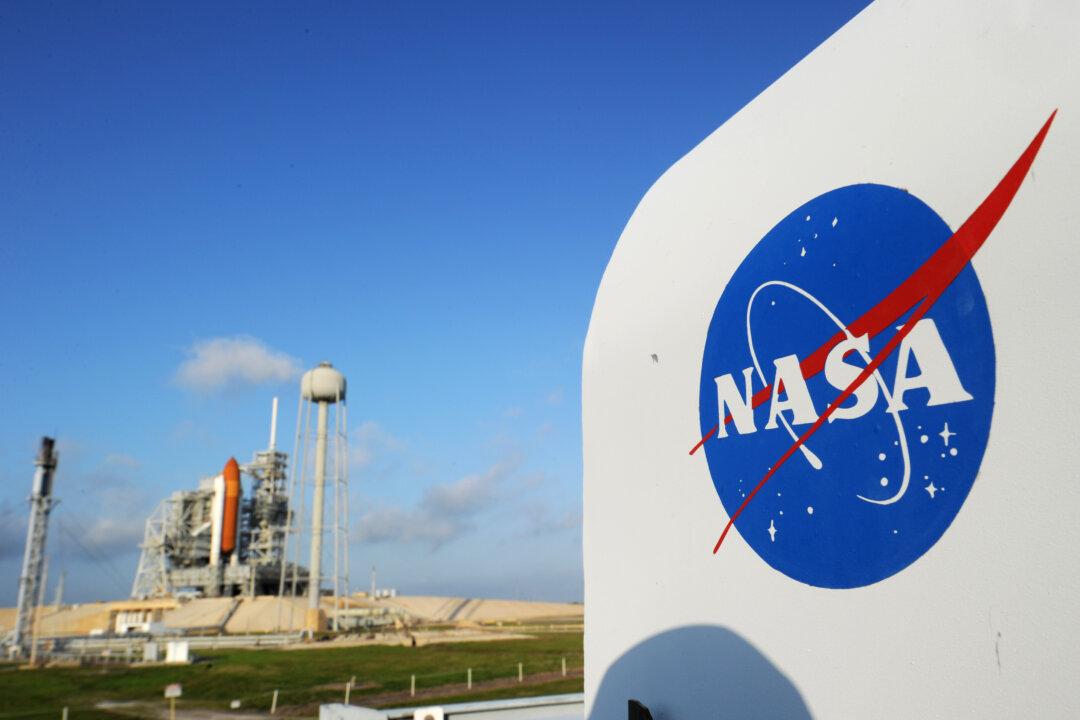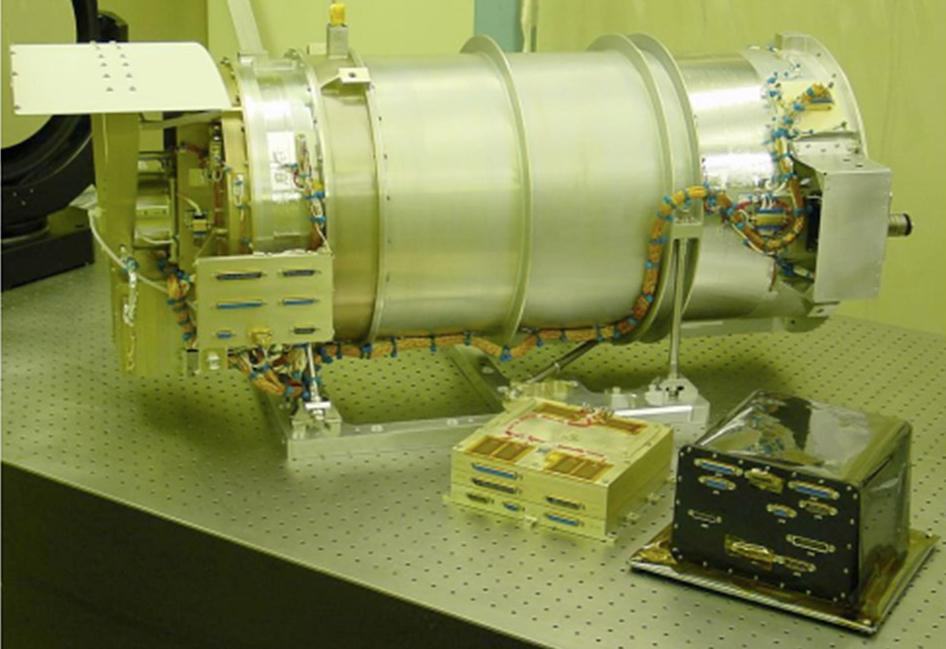NASA
Author
LATEST

|
How NASA Space Technologies Can Improve Life on Earth (Video)
NASA technologies are being used to locate underground water in some of the driest places on the Earth, build quieter and more fuel-efficient airplanes, and create shock absorbers that brace buildings in earthquakes.
|

|
NOAA’s DSCOVR to Provide “EPIC” Views of Earth
NASA has contributed two Earth science instruments for NOAA’s space weather observing satellite called the Deep Space Climate Observatory or DSCOVR, set to launch in January 2015. One of the instruments called EPIC or Earth Polychromatic Imaging Camera will image the Earth in one picture, something that hasn’t been done before from a satellite. EPIC will also provide valuable atmospheric data.
|

|
NASA Awards Information Technology, Multimedia Services Contract
NASA has exercised the second option of its Information Technology and Multimedia Services (ITAMS) contract with DB Consulting Group, Inc., Silver Spring, Maryland, to provide information technology, multimedia, information management and external relations support services at the agency’s Johnson Space Center in Houston.
|

|
NASA Observatories Take an Unprecedented Look Into Superstar Eta Carinae
Eta Carinae, the most luminous and massive stellar system within 10,000 light-years of Earth, is known for its surprising behavior, erupting twice in the 19th century for reasons scientists still don’t understand.
|

|
NASA Finds Good News on Forests and Carbon Dioxide
A new NASA-led study shows that tropical forests may be absorbing far more carbon dioxide than many scientists thought, in response to rising atmospheric levels of the greenhouse gas. The study estimates that tropical forests absorb 1.4 billion metric tons of carbon dioxide out of a total global absorption of 2.5 billion -- more than is absorbed by forests in Canada, Siberia and other northern regions, called boreal forests.
|

|
Hubble Discovers That Milky Way Core Drives Wind at 2 Million Miles per Hour
At a time when our earliest human ancestors mastered walking upright the heart of our Milky Way galaxy underwent a titanic eruption, driving gases and other material outward at 2 million miles per hour.
|

|
NASA’s Chandra Detects Record-Breaking Outburst From Milky Way’s Black Hole
Astronomers have observed the largest X-ray flare ever detected from the supermassive black hole at the center of the Milky Way galaxy.
|

|
First 3-D Printer Built in Space
The object, a printhead faceplate, is engraved with names of the organizations that collaborated on this space station technology demonstration: NASA and Made In Space, Inc., the space manufacturing company that worked with NASA to design, build and test the 3-D printer.
|

|
NASA’s Kepler Reborn, Makes First Exoplanet Find of New Mission
NASA’s planet-hunting Kepler spacecraft makes a comeback with the discovery of the first exoplanet found using its new mission -- K2
|

|
MESSENGER Data Suggest Recurring Meteor Shower on Mercury
The closest planet to the sun appears to get hit by a periodic meteor shower, possibly associated with a comet that produces multiple events annually on Earth.
|

|
How NASA Space Technologies Can Improve Life on Earth (Video)
NASA technologies are being used to locate underground water in some of the driest places on the Earth, build quieter and more fuel-efficient airplanes, and create shock absorbers that brace buildings in earthquakes.
|

|
NOAA’s DSCOVR to Provide “EPIC” Views of Earth
NASA has contributed two Earth science instruments for NOAA’s space weather observing satellite called the Deep Space Climate Observatory or DSCOVR, set to launch in January 2015. One of the instruments called EPIC or Earth Polychromatic Imaging Camera will image the Earth in one picture, something that hasn’t been done before from a satellite. EPIC will also provide valuable atmospheric data.
|

|
NASA Awards Information Technology, Multimedia Services Contract
NASA has exercised the second option of its Information Technology and Multimedia Services (ITAMS) contract with DB Consulting Group, Inc., Silver Spring, Maryland, to provide information technology, multimedia, information management and external relations support services at the agency’s Johnson Space Center in Houston.
|

|
NASA Observatories Take an Unprecedented Look Into Superstar Eta Carinae
Eta Carinae, the most luminous and massive stellar system within 10,000 light-years of Earth, is known for its surprising behavior, erupting twice in the 19th century for reasons scientists still don’t understand.
|

|
NASA Finds Good News on Forests and Carbon Dioxide
A new NASA-led study shows that tropical forests may be absorbing far more carbon dioxide than many scientists thought, in response to rising atmospheric levels of the greenhouse gas. The study estimates that tropical forests absorb 1.4 billion metric tons of carbon dioxide out of a total global absorption of 2.5 billion -- more than is absorbed by forests in Canada, Siberia and other northern regions, called boreal forests.
|

|
Hubble Discovers That Milky Way Core Drives Wind at 2 Million Miles per Hour
At a time when our earliest human ancestors mastered walking upright the heart of our Milky Way galaxy underwent a titanic eruption, driving gases and other material outward at 2 million miles per hour.
|

|
NASA’s Chandra Detects Record-Breaking Outburst From Milky Way’s Black Hole
Astronomers have observed the largest X-ray flare ever detected from the supermassive black hole at the center of the Milky Way galaxy.
|

|
First 3-D Printer Built in Space
The object, a printhead faceplate, is engraved with names of the organizations that collaborated on this space station technology demonstration: NASA and Made In Space, Inc., the space manufacturing company that worked with NASA to design, build and test the 3-D printer.
|

|
NASA’s Kepler Reborn, Makes First Exoplanet Find of New Mission
NASA’s planet-hunting Kepler spacecraft makes a comeback with the discovery of the first exoplanet found using its new mission -- K2
|

|
MESSENGER Data Suggest Recurring Meteor Shower on Mercury
The closest planet to the sun appears to get hit by a periodic meteor shower, possibly associated with a comet that produces multiple events annually on Earth.
|








